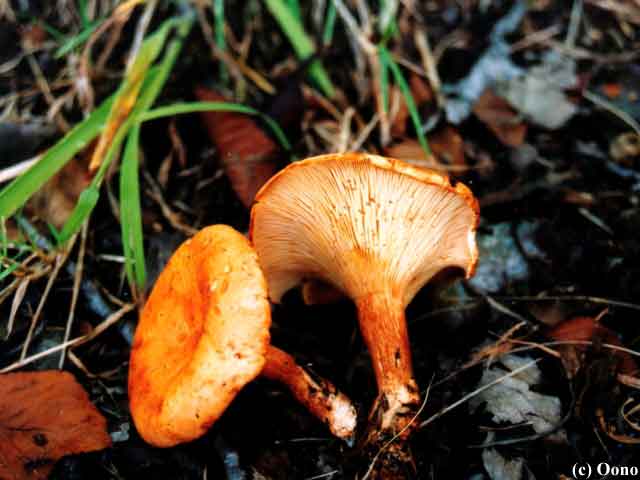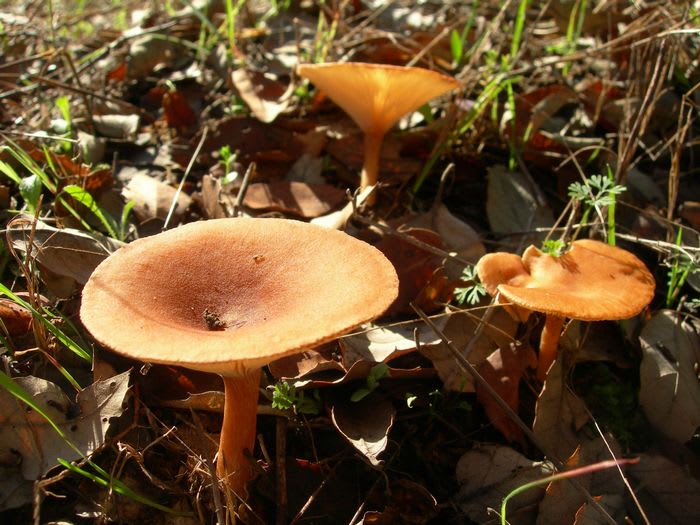Clitocybe acromelalga
The bamboo Trichterling ( Clitocybe acromelalga ), in English " bamboo poisonous mushroom" ( = Toxic bamboo fungus) and Japanese " dokusasako " ( = poison child of dwarf bamboo), is a poison mushroom from the family of Tricholoma relatives.
Features
The medium to reddish brown hat, arising from a thin light brown stem, already at the young fruit body shows the typical funnel shape. The wavy brim is seen from above significantly brighter than the Hutmitte and bent brim like the young mushroom. The far lolly run-down, light cream-colored and very thin, closely spaced fins do not reach the brim. In general, the fruiting bodies appear in small groups.
Artabgrenzung
The bamboo Trichterling can be confused with edible mushrooms of the genera honey mushrooms and Rötelritterlinge. From the former it differs by the absence of a stem collar, the group -like ( not tufted ) growth and the location ( not on wood), from the latter by the white and never reddish mycelium in soil and microscopically by the never warty spores.
Ecology
The bamboo Trichterling grows in Japan and (more rarely) in Korea, often below or near bamboo, rare in coniferous forests.
Importance
The bamboo Trichterling was first described in 1918 by the Japanese doctor Tsutsumi Ichimura and recognized as poisonous. Through the toxin contained Acromelsäure the consumption of bamboo funnel -form leads to a very painful, sometimes deadly mushroom poisoning. However, in those up to a week latency period, the fungus is often not or detected too late as a cause of discomfort.
Ichimuras findings also made it possible in 1996 to identify the occurring in northwest Africa and southwest Europe Perfumed Trichterling as second acromelsäurehaltigen Toadstool.









